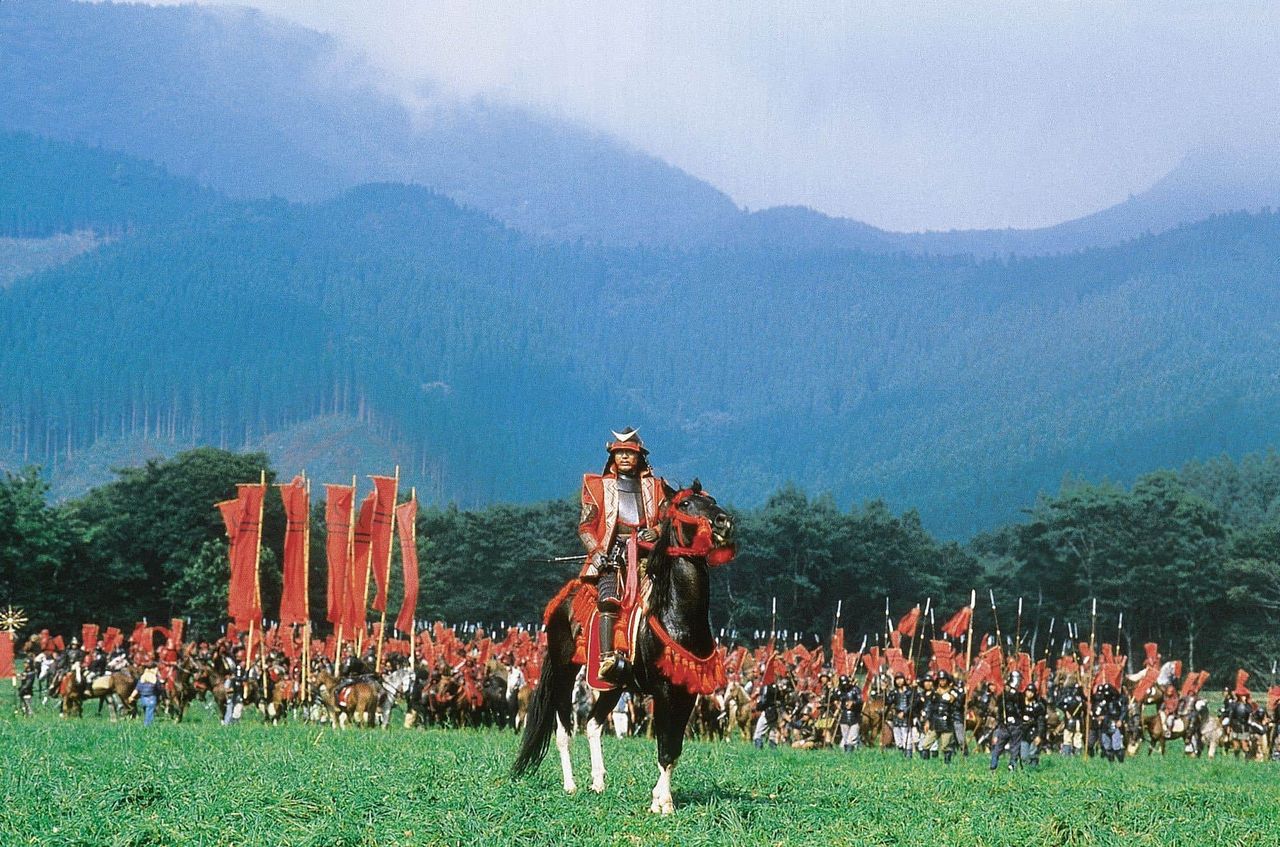
In Japanese, "Ran" means "chaos". A masterpiece of director Akira Kurosawa’s later career, sweeping samurai epic Ran is a staggering fusion of colour, motion and sound.
In 16th-century Japan, an ageing warlord divides his domain among his three sons - but none of them are happy about it.
The plot is driven by this palace intrigue - loosely inspired by Shakespeare’s King Lear - as warlords, wives and generals scheme to take power. Ran then expands to show the bloody consequences of this royal bickering, with expansive battle scenes employing legions of extras and panoramic sets.
It's available to rent or buy online, or stream on StudioCanal, an Amazon Prime Video channel.
But it's worth seeking out StudioCanal's 4K-restored remaster to pick out the fine detail: the costumes, the textured timber castles, and the lush Japanese landscapes.
Kurosawa directed his first film in 1943 and is perhaps best known for his earlier black-and-white films like Rashomon and Seven Samurai, the latter being the inspiration for The Magnificent Seven. But his later films like Kagemusha and 1985’s Ran make powerful use of colour.
Opening in almost impossibly green hills, Ran plays out against vast blue skies filled with towering clouds and open natural landscapes that dwarf the people and their pointless arguments. A number of scenes play out atop castle walls set against the deep hues of sunset.
Flags and banners are coloured with a palette of vivid primary colours, which helps to keep track of the various factions through hellish battle sequences.
Colour is just one of the elements that gives Ran an almost hallucinatory visual feel. As the ageing ruler, Tatsuya Nakadai delivers a theatrical performance complete with ghost-like makeup that tips the film towards a feeling of grim fairy tale. L
ook out too for a searing performance from Mieko Harada as the cruelly wronged Lady Kaede, an unforgettable character burning with vengeance.
Inevitably, red ends up being the dominant colour, as the squabbles lead to unbearable bloodshed.
The battle scenes are both epic and brutal, with hundreds of extras pouring onto the screen and the battlefield. The scale is astonishing, but the effect is horrifying rather than spectacular.

Unlike many war films, Ran doesn't introduce us to the soldiers or explain the progress of each battle. Instead, we're shown a frenzy of death and depravity as masses of unknown and unsung soldiers are maimed and massacred. Each battle is a delirious hellscape with no heroes or victories.
The masterful editing reinforces the tragedy of the fighting, especially in the use of agonising repetition that forces you to watch men falling in agony and tumbling from horses over and over until it becomes almost unbearable.
Heightening the carnage is the tense, stark and foreboding score by Composer Tôru Takemitsu, making unsettling use of wood percussion, rumbling taiko drums and traditional Japanese flutes. One battle sequence plays out without any sound, the music lending pathos to the savagery.
The cinematic grandeur of Ran matches the richness of its themes. A bunch of rich kids freak out over whether their castles are big enough, and everyone has to fight and die.
It's a powerful tale of human ambition, betrayal and hubris, with subtle performances and rich characters locked in a compelling spiral of self-destruction. Rarely has chaos looked so good.







